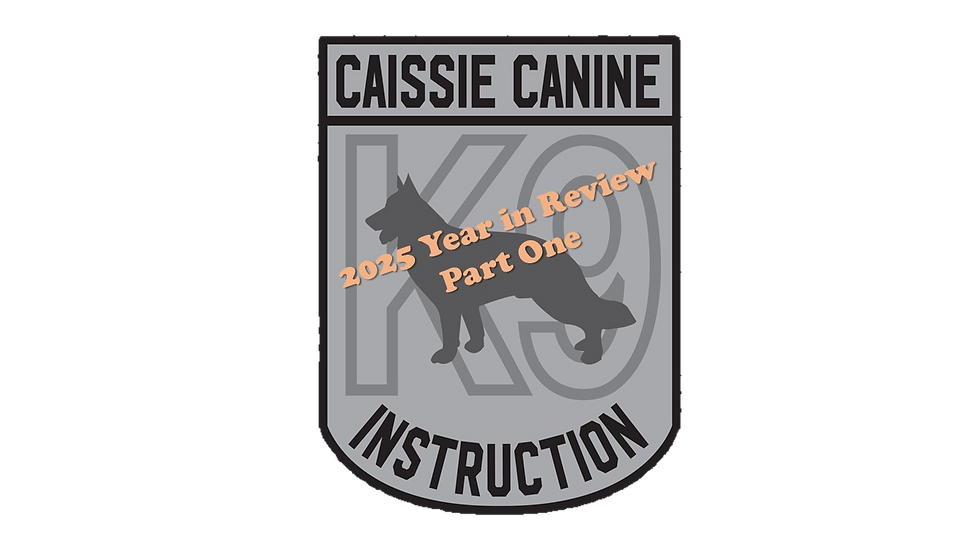Caissie Canine Instruction: K9 First Aid and C.P.R.
- caissiecanineinstr

- Jul 10, 2023
- 3 min read

We begin this week’s “RUFF TAILS” featuring a beautiful German Shepherd puppy named Misty.
In 2020, after 24 years as a 911 operator, I had a mental breakdown after a particular tragic incident at work. For the next 2 years I stayed home, afraid to go out into the world. Misty basically saved my life. She forced me to get out into nature for walks and back into the community.

Misty is a sweet, patient and very loving K9, BUT of course she is still a puppy. She is our first German Shepherd, a breed that we wanted for a long time, and we didn’t realize how smart the breed is. She loves to learn and eager to please. She is a good dog but with Caissie Canine Instruction I know she will be awesome.

She loves my grandchildren who are 6 and 1 years old and she already has the tendency to protect them and keep them safe. I can’t wait to see how incredible she will become.
Welcome to Doggie Dialogue
Our K9’s are a part of the family, therefore learning first aid and CPR skills for your dog in case of an emergency allows you to offer the best care possible should you ever get into a difficult situation.

K9’s can get into situations where first aid maybe required for a cut, bite, or fracture when venturing out and doing outdoor activities. Investing in a pet first aid kit is a great idea, especially if you do a lot of camping or hiking with your K9.

For a cut we recommend pressing a clean, thick piece of gauze over any wound and keep pressure over the wound with your hand until the blood begins to clot. (Minimum 3 minutes). Keep your K9 warm and quiet, if possible.
For a wildlife bite, contact your vet immediately for specific first aid advice. For a fracture, limit your K9’s movement by putting them in a crate and call your vet for instruction.

Remember not to overly coddle your K9 at this time, has they can become unpredictable in their behaviour because of stress or fear, they could bite, even you.
When doing C.P.R. first start by checking to see if your K9 has a heartbeat and is breathing. Secondly check to see if there is any obstruction to ensure the air passageway is clear. If you can not find a heartbeat, begin C.P.R. with chest compressions.

For a large dog you maybe able to position the dog on its back and compress the chest just like a human. If not, then keep your dog on his/her side to do the chest compressions. For small dogs you will need to lay your dog on its side, bend the front leg, and where the “elbow” is positioned on your dog, underneath is where the heart will be, close the rib cage, start compressions.
Dogs over 60 lbs, 60 compressions per minute are recommended, 11-60 lbs., 80-100 compressions per minute are recommended, and K9’s under 10 lbs. or less 120 compressions per minute.

Remember to alternate rescue breaths with compressions. The ratio is 30:2. (30 compressions to 2 rescue breaths) Continue this until your dog begins to breath on their own.
To do rescue breaths, for a large dog extend the head, close your dog’s jaw tightly, and give 2 breaths into the nose. Your dog’s chest should rise.

For smaller dogs you maybe able to cover the nose and mouth, then give them 2 rescue breaths, and continue with compressions.
You can find great pet C.P.R. videos on YouTube, and there are many companies you can register for that offer First Aid and C.P.R. training for pets.
Always seek veterinarian assistance afterwards to ensure there are no other medical concerns and your K9 is on the road to recovery.





Comments